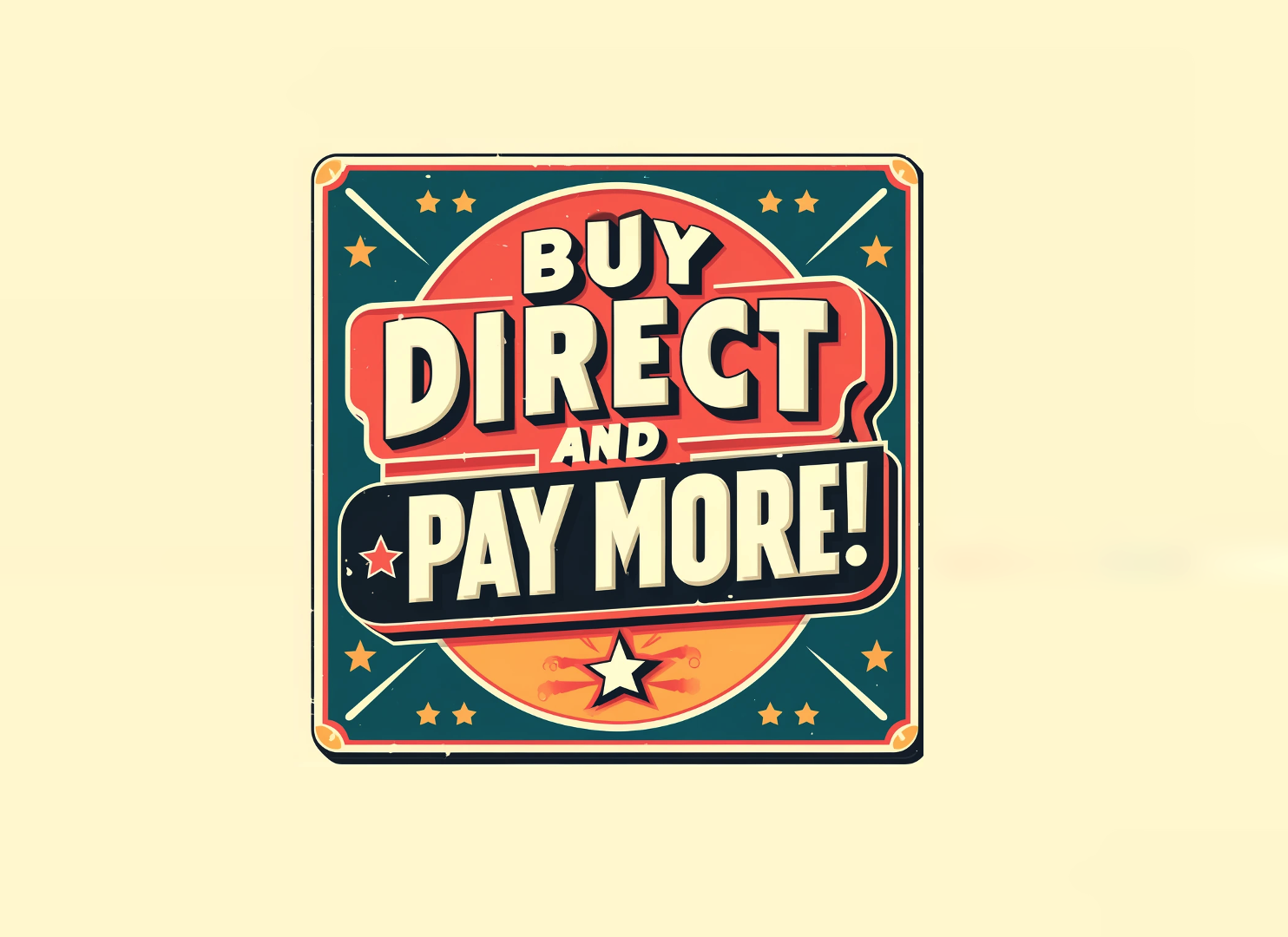No doubt you’ve heard that old adage about cutting out the middleman to reduce costs. It’s intuitively obvious that bypassing intermediaries in a transaction to deal directly with the source means a lower price for the buyer.
But when it comes to display advertising, this truism ain’t, umm, true.
Digital display advertising is online graphic advertising through banners, text, images, video, and audio. The main purpose of display, or banner, ads is to deliver a company’s advertising message on third-party websites. A display ad is usually interactive, which allows brands and advertisers to lure potential customers to their websites. (It’s also a format a lot of users try to suppress using ad blockers – according to Statista, 43% of Canadians use ad blockers on desktop, and 23% on mobile.)
There are two ways to buy display ads: directly from the website’s publisher and indirectly through programmatic demand-side platforms (DSP) like Google Display Video 360, Yahoo Ad Tech and Amazon DSP.
The purpose of this post is to present a management level discussion about the two basic ways for an advertiser to buy these display ads. We are not getting into “how” these work as that topic is highly technical and best left to the propellerheads in ad ops.
So let’s get into it.
Buying display advertising directly from the publisher offers distinct advantages and disadvantages. Let’s start with the upside:
- Working directly with the publisher can give you better access to premium ad placements and custom advertising opportunities. These placements include page skins and page takeovers. There may be more opportunities to negotiate custom ad formats, integrations, and sponsorships that are not available through automated platforms
- You can secure a guaranteed amount of inventory, ensuring your ads appear when and where you expect
- Access to page inventory on lower traffic – but high quality – websites. This is particularly true of websites in Canada that cater to business or professional audiences. These sites cannot afford to monetize traffic through a DSP, so they sell directly to command higher prices per thousand impressions
- You get more control over the environment where your ads are placed, reducing the risk of appearing on undesirable or irrelevant sites
The cons of buying display ads directly from the publisher:
- Usually direct buys come with higher prices due to the premium nature of the inventory
- Some premium placements are relevant to desktop impressions only, an ever decreasing pool. (In Canada, desktop now accounts 57% of all web traffic, versus 70% in 2015.)
- Buying directly from a single publisher limits your reach compared to the vast inventories accessible through a DSP
- Buying direct can be time-consuming and labor-intensive as it involves negotiations and manual setup for each publisher
- Unlike DSPs, direct buys do not typically allow for real-time bidding and adjustments based on ad performance. Furthermore, unless you are serving the ads to the publishers website yourself (through an ad server), you are at the mercy of the publisher when it comes to reporting. Beware of fraud!
Buying through a Demand-Side Platform (DSP) offers the following advantages:
- The ability to use real-time bidding to potentially get lower prices on ad inventory through auctions. Based on our experience, DSP inventory is about one quarter to one third the average cost of an impression purchased directly
- DSPs provide a highly efficient and automated way to purchase ads across a wide range of publishers and platforms using a single interface. Access to such a vast array of inventory across many publishers and ad exchanges means scale for you
- Advanced targeting options, including first and third party audiences and retargeting
- The ability to optimize campaigns in real-time based on performance data
But with those significant advantages comes some downside:
- Less control over placements. Ads may end up on a wide range of sites, some of which may not align perfectly with your brand values or target audience. This can be managed with whitelists and audience targeting within the DSP, but it’s not perfect
- Even worse, sometimes it’s unclear where ads are being placed, which can affect assessments of effectiveness and brand safety
- The technology and strategies behind DSPs is complex and requires specialized knowledge or external management (see “propellerheads” above)
- Programmatic ad fraud is very difficult to detect, but the larger DSPs like DV360 are constantly innovating way to stay ahead of the fraudsters
Happily, large advertisers are not faced with a dichotomous choice: A direct deal can be part of an advertising plan that also includes a DSP.
Advertisers can also negotiate a Deal ID with publishers. With a Deal ID, advertisers negotiate a set volume of impressions over a specific time period. After negotiating terms outside of the DSP platform, a Deal ID is generated and shared between parties. Advertisers use it to specify which impressions they want to buy, while publishers use it to identify eligible impressions. In other words, the advertiser gets the best of two worlds.
In summary, buying directly from a publisher provides more control and potential for customization but at a higher cost and with less flexibility. Using a DSP, on the other hand, offers vast reach, efficiency, and the ability to optimize campaigns dynamically, though it may come with reduced transparency and control over exact ad placements. The best choice depends on your specific advertising goals, budgets, and priorities.
